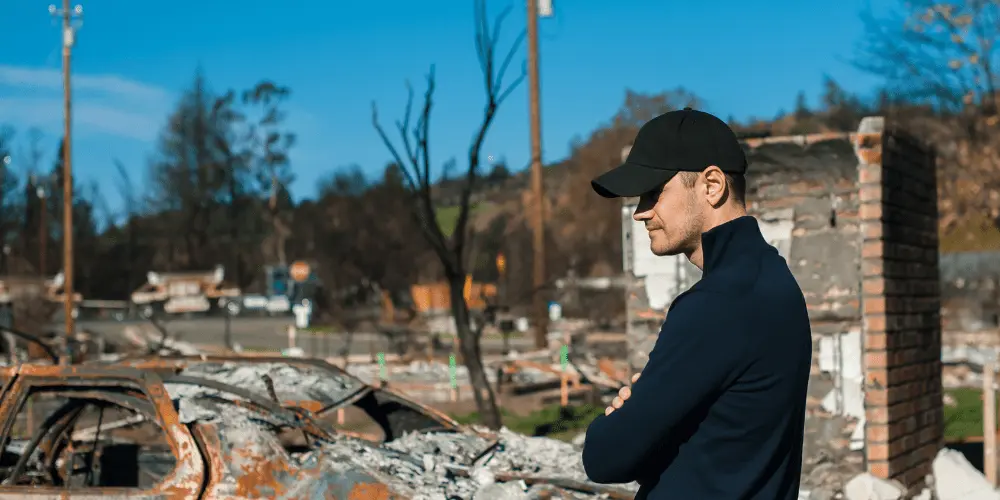
When disaster strikes, it’s normal to feel overwhelmed. Families often wonder: Where do I start? Who can I trust? The good news is that FEMA disaster relief and related services exist to help disaster survivors regain stability after a major disaster. Let’s walk through the different types of aid so you know what to expect.
Your safety comes first. Once you and your family are secure, document the damage to your home and property. Take photos, keep receipts, and save repair estimates. Contact your insurance company right away; assistance will only cover what insurance does not. Disasters strike across the world globe, but here in the U.S., support is tied to official declarations.
A declared disaster is the trigger for most federal programs. The president, working with a governor, may approve a disaster declaration after reviewing damage reports. An affected state must meet specific rules before FEMA aid is released. You can check the latest declarations on official pages ending in dot gov.
Some events are only labeled emergencies, while others are classified as a major disaster. The difference matters: a major disaster opens the door to broader disaster assistance. Federally declared disasters also allow state and local governments, tribal programs, and organizations to apply for funding.
The Federal Emergency Management Agency (FEMA) works with state, local, and tribal partners to coordinate emergency management and provide resources. FEMA disaster relief covers services like housing, temporary shelter, and community rebuilding. These efforts often involve private nonprofit organizations and local governments. For a deeper look at the agency itself, see our article What is FEMA? Understanding Its Role in Disaster Recovery.
Disaster relief is the broad system of federal aid. Disaster assistance usually refers to direct help for individuals. That may include financial assistance, inspections, or covering certain repair costs. Relief efforts support the entire community, while disaster assistance addresses the personal needs of survivors. Learn more in our article: FEMA Disaster Assistance: How it Works and Who It Helps.

FEMA disaster survivors may include individuals, households, renters, and homeowners. To apply, you’ll need to prove your identity, residency, and that your home is in a declared disaster area. Keep your account information, letters, and claim numbers organized. If a spouse is listed on your mortgage or lease, both names should appear on documents you submit. These programs exist to assist disaster survivors in regaining stability.
Covered expenses can include rental assistance, home repair or replacement, funeral costs, medical or doctor bills, transportation, and child care. FEMA will not give free money for losses already covered by insurance, but it may provide additional support where gaps remain. For instance, if your home was damaged in a flood, FEMA may help cover essential repairs that insurance does not.
The Individuals and Households Program (IHP) may help pay rent if you can’t return home or provide funds for repairs. Replacement assistance may be available if your home is destroyed. Repairs must meet safety standards, and FEMA may send inspectors to review your property.
Other Needs Assistance (ONA) can help replace personal property, cover tools needed for work, or pay for serious medical expenses. This type of aid can also support small businesses or private nonprofit organizations that manage recovery services.
The FEMA app lets you check your application status, upload documents, and search for local Disaster Recovery Centers. Download it from the Apple's App Store or Google Play. Look for the search icon to find resources quickly.
If you prefer face-to-face help, visit a Disaster Recovery Center. Staff can answer questions, help you submit documents, and connect you with other resources. Use FEMA’s DRC Locator to find a site near you or call by phone if travel is not possible.
The IRS may provide tax relief after a disaster. This could mean extended filing deadlines or deductions for casualty losses. Tips from the IRS can help you prepare paperwork so your claim is processed smoothly.
The U.S. Small Business Administration offers disaster loans to homeowners, renters, businesses, and nonprofits. Loans can be used to repair property, replace inventory, or manage rebuilding costs.
Programs like HUD’s Community Development Block Grant Disaster Recovery provide long-term funding for housing and infrastructure. Local governments and tribal authorities often manage these funds to meet community needs.
Sadly, fraud is common after disasters. Always check that the site you use ends in .gov and look for the U.S. flag logo. Never trust people asking for upfront fees. Reliable sources include FEMA, DisasterAssistance.gov, the Red Cross, and Ready.gov.
Start your application as soon as possible. Go to DisasterAssistance.gov or call the FEMA helpline. Provide proof of identity, insurance, and address. Submit all requested forms, respond to letters promptly, and keep copies for your records. Following these rules will help avoid delays.
Recovering from disaster is not only about repairing your home; it’s also about rebuilding your financial life. If you feel stuck or stressed, you’re not alone. Credit.org’s Disaster Recovery Counseling offers one-on-one guidance to help you manage debt, create a recovery plan, and move forward with confidence.